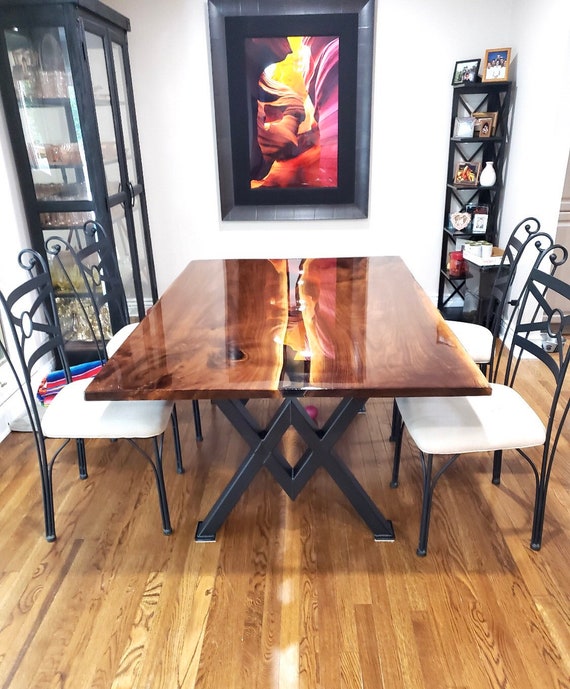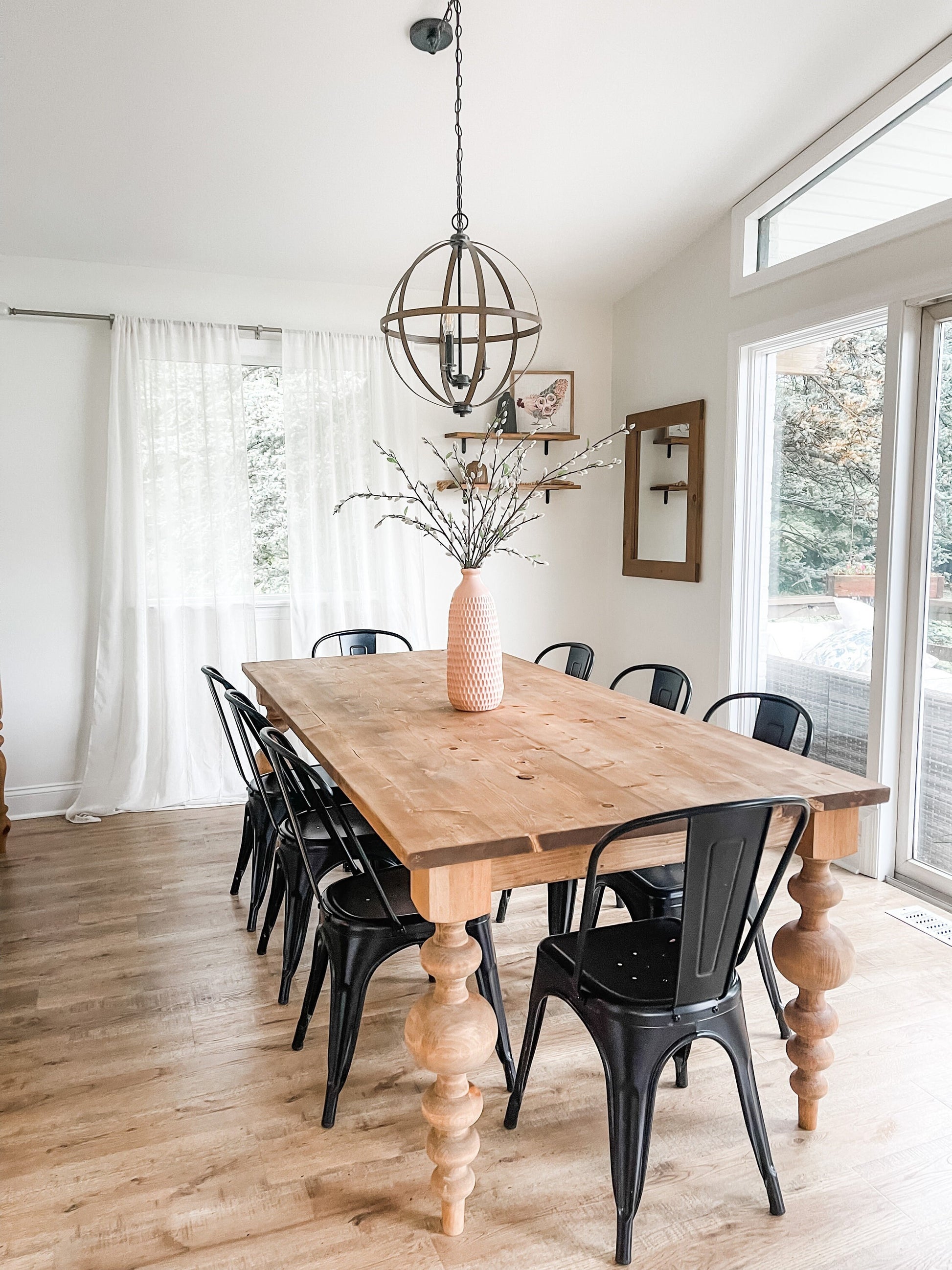Exactly How to Pick the Perfect Dining Area Table Legs for Your Home Decor
Choosing the perfect eating area table legs is a nuanced procedure that calls for careful consideration of numerous elements, including your area restraints, aesthetic preferences, and practical demands. The interaction in between dimensions, designs, and materials can considerably affect the setting of your eating area, making it necessary to approach this choice methodically.
Assess Your Dining Space
Assessing your eating room is important for choosing the right table legs that match both looks and functionality. Begin by determining the dimensions of your dining area, including ceiling elevation, floor area, and proximity to other furnishings. This info will certainly help determine the suitable size and height of your dining table, which straight affects the selection of table legs.
Next, think about the style and format of your eating space. An open-concept layout might profit from table legs that use aesthetic agility, such as slender metal or acrylic options. Alternatively, a more standard setting may call for durable wood legs that supply a sense of permanence.
Review the existing shade combination and materials in your dining area. Balancing the table legs with these aspects creates a natural appearance that enhances the total decoration. Additionally, consider the functionality called for in your space. If you often hold large events, think about legs that provide added assistance and security.
Inevitably, a detailed assessment of your dining space will certainly direct you in making a notified choice, ensuring that your table legs not only improve the aesthetic charm however also serve useful functions.
Consider Your Design Preferences
When selecting dining space table legs, it is necessary to mirror on your individual design preferences, as they dramatically affect the overall visual of your dining room. Your option of table legs can either complement or contrast with existing decor, making it essential to align them with your recommended indoor design style.
If your home leans towards a contemporary aesthetic, think about streamlined steel or minimalist wooden legs that provide a tidy, minimalist appearance. For a much more typical method, ornate wooden legs with elaborate makings can add a touch of beauty and refinement. Industrial designs gain from robust, raw materials such as reclaimed timber and metal mixes, reflecting a sturdy beauty.
In addition, farmhouse and rustic designs typically favor tough, beefy legs that stimulate a sense of heat and comfort. Conversely, if your décor is eclectic, you may pick unique forms or a mix of products to develop aesthetic passion.

Evaluate Product Options
The option of product for dining area table legs plays a crucial role in both toughness and visual charm. Typical materials consist of timber, metal, and composite options, each offering distinct characteristics that can influence the total appearance and durability of your table.
Wood is a timeless choice, understood for its heat and adaptability. Woods like oak and walnut provide remarkable toughness and can be ended up in numerous spots to match any decoration. Softwoods like want are much more vulnerable to scratches and dents, making them much less optimal for high-traffic areas.
Steel legs, usually crafted from steel or light weight aluminum, exhibit modernity and industrial beauty. They are resistant and highly resilient to wear, making them appropriate for families with children or constant gatherings (dining room table legs). In addition, steel can be completed in various colors, boosting the personalization possibilities
Composite materials, such as MDF or laminate, offer price and diverse styles. While generally less sturdy than strong timber or metal, they can description still provide a stylish appearance and are often very easy to keep.
Ultimately, the material you choose ought to straighten with your way of life, aesthetic preferences, and the degree of usage your eating table will experience.
Determine Height and Size
Picking the ideal height and size for your dining-room table is important for both functionality and convenience. The typical height for dining tables normally varies from 28 to 30 inches, enabling ample legroom for many people when seated. It is essential to consider the dimensions of your eating room and the types of chairs you prepare to make use of.

Furthermore, consider the percentages of your eating area. A larger table in a roomy area can create a grand ambiance, while a smaller sized table functions well in even more intimate settings. Eventually, the right elevation and size will balance with your total decoration and improve the eating experience for you and your visitors.
Explore Customization Opportunities

Additionally, the layout of the legs can be customized to fit various styles, such as rustic, modern-day, or industrial. For instance, conical legs can evoke a mid-century modern feeling, while beefy, block-style legs might resonate with standard or farmhouse style.
House owners can also discover shade finishes, from natural timber stains to repaint, allowing them to match or contrast with the tabletop and bordering style.
Additionally, Resources leg elevation can be readjusted to suit certain seating plans or individual preferences, enhancing both convenience find out this here and performance.
Finally, distinct decorations, such as makings or ornamental brackets, can additionally individualize the table legs, making the eating experience not just a meal but a statement item in the home. By considering these customization options, property owners can produce a dining-room table that truly shows their originality.
Final Thought
Picking the excellent dining space table legs requires mindful consideration of various variables, including the measurements of the dining space, style preferences, product toughness, and wanted elevation. Customization choices better boost the capability to attain a cohesive visual that matches the total style. By systematically evaluating these elements, home owners can make certain that the picked table legs not only satisfy useful demands but also contribute favorably to the dining experience and ambiance of the home.
Picking the perfect eating area table legs is a nuanced process that needs mindful factor to consider of different elements, including your area constraints, visual choices, and functional needs.Evaluating your dining area is critical for choosing the right table legs that complement both visual appeals and functionality.When identifying size, determine the location where the table will certainly be put to ensure it fits conveniently, enabling for at the very least 36 inches of clearance around the table for simple movement. A bigger table in a sizable area can develop a grand setting, while a smaller sized table functions well in more intimate setups.Choosing the perfect dining area table legs calls for mindful factor to consider of different variables, consisting of the dimensions of the eating room, design preferences, product toughness, and desired height.